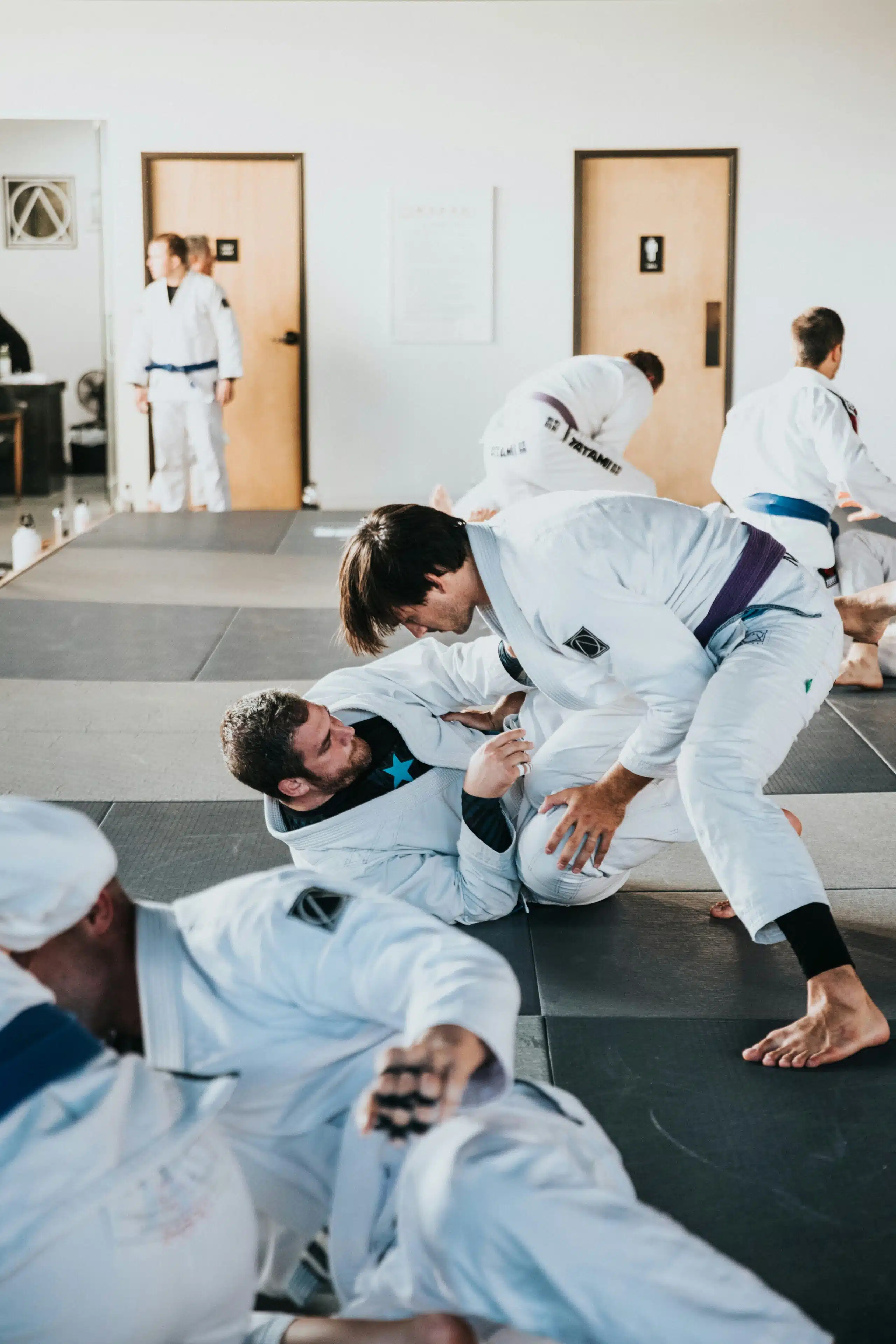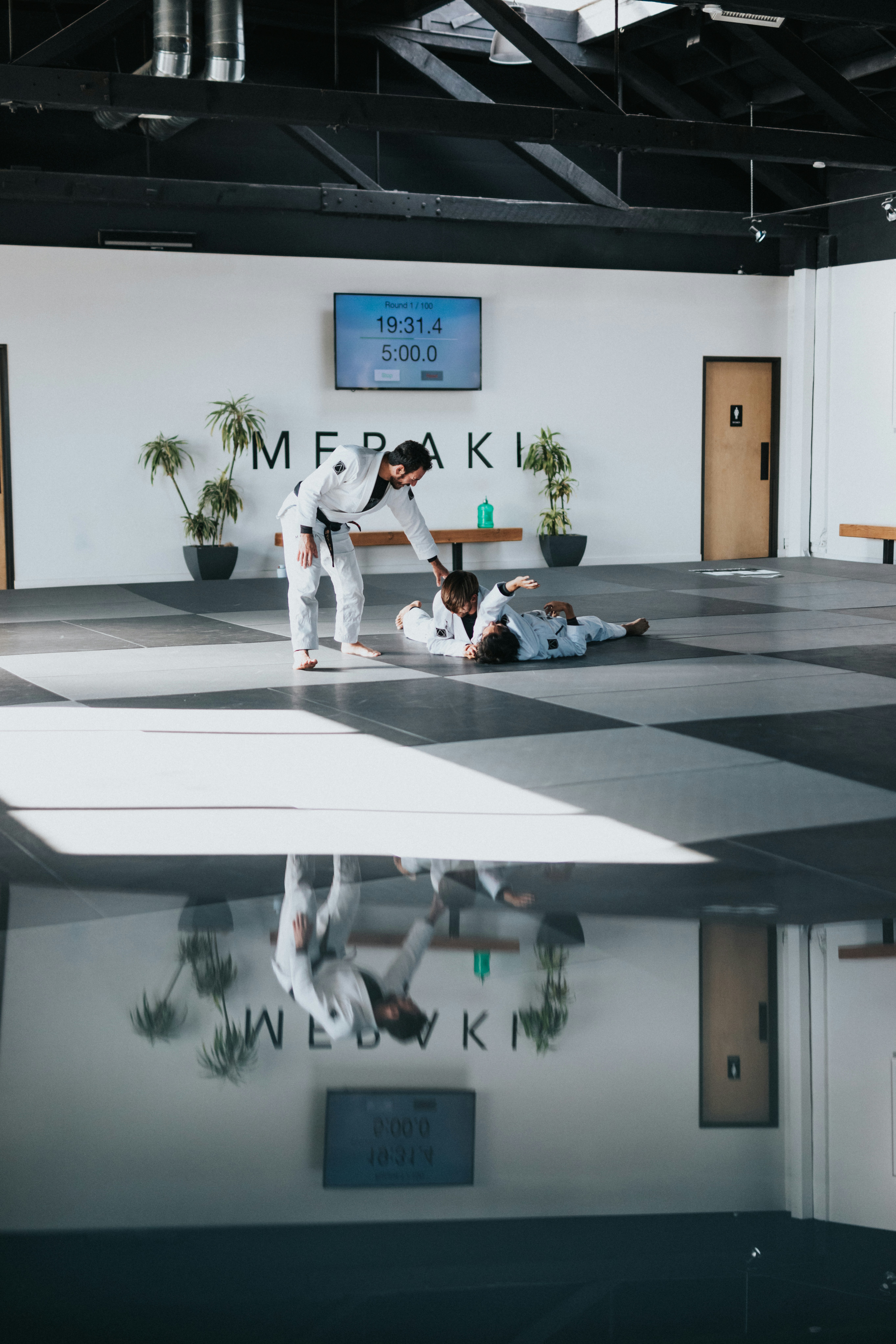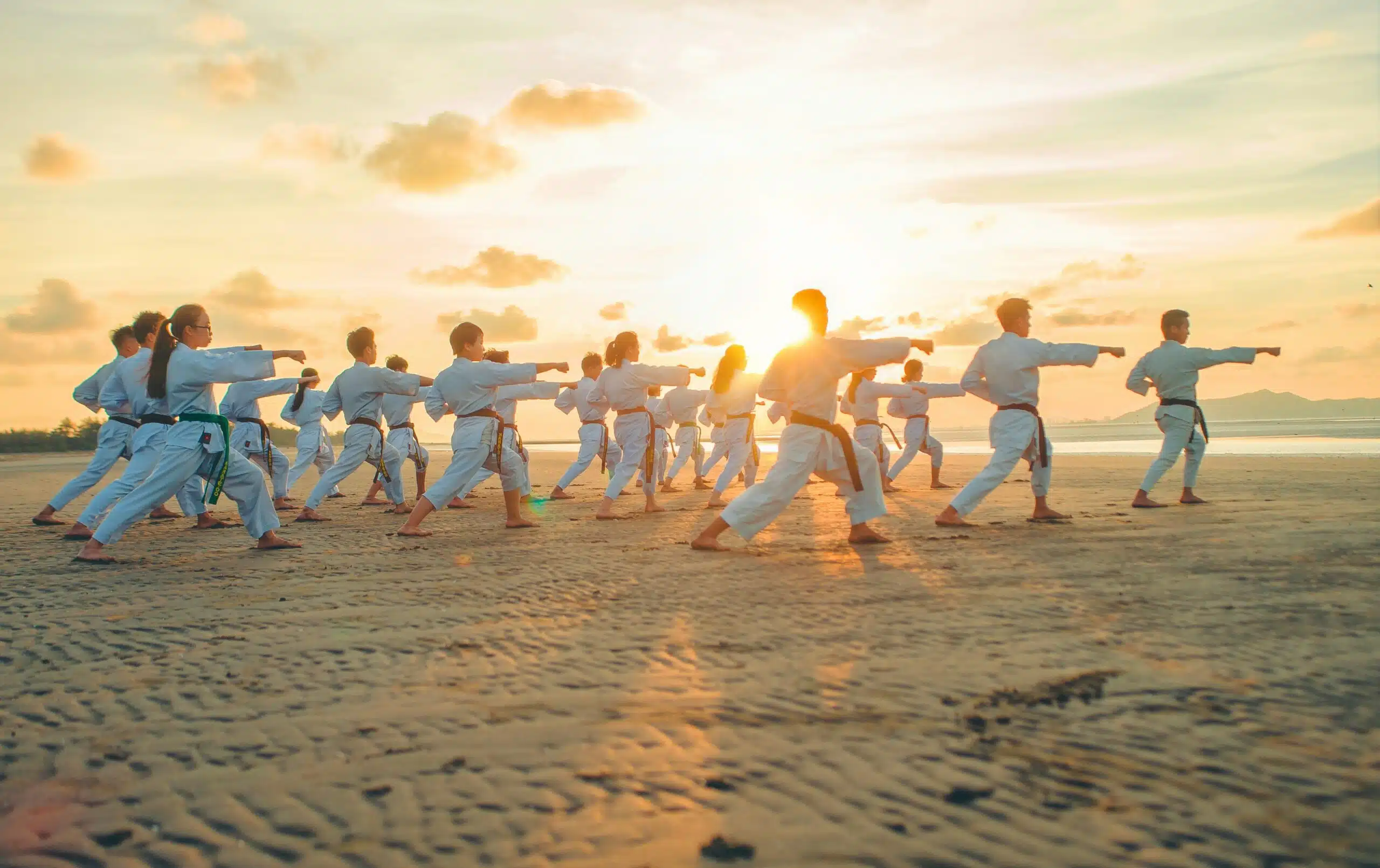Are you struggling to find the perfect location for your martial arts school? The success of your business can often depend on where it’s located. This article will guide you through understanding how crucial the Best Location for Martial Arts Business is and help you evaluate your options.
We’ll cover factors like analyzing local competition, ensuring convenient transportation and parking, and using digital tools to make informed decisions.
By focusing on the right location, you can strengthen your business and ensure that your members can easily access your studio.
Key Takeaways
- Location choice can significantly impact a martial arts school’s enrollment and growth
- Accessibility and neighborhood safety are top priorities for parents when choosing martial arts programs
- Visibility and foot traffic greatly enhance a studio’s ability to attract walk-in students
- Flexible lease terms and the capacity for expansion are essential for a growing martial arts business
- Leveraging digital tools like GIS and social media helps in making informed location decisions
Understanding the Importance of Location in Martial Arts Business Success

Choosing the right location is a critical step for martial arts business owners aiming to attract students and grow their schools. Proximity to residential areas can be a strong draw for families seeking physical fitness and valuable life skills for their children. It’s important to consider how easily students can access the school, as better accessibility often leads to higher enrollment.
Additionally, the safety of the neighborhood and local demographics significantly influence a location’s appeal. Owners must also balance visibility to attract foot traffic with the cost of rent, ensuring long-term sustainability. This section explores these vital factors and their impact on martial arts business success.
The Role of Location in Attracting Martial Arts Students
When parents search for a summer camp to build their children’s skills, they prioritize convenience and accessibility. A martial arts school located near major residential areas is more likely to catch their attention, making it easier for families to enroll their children when the venue is part of their daily routine.
Similarly, a strategically placed dojo that can double as a venue for events like birthday parties becomes an attractive, multi-functional facility for the community, increasing its appeal beyond regular classes.
How Accessibility Influences Martial Arts School Enrollment
Easy access to a martial arts studio significantly increases the likelihood of consistent student enrollment. A studio conveniently located near schools or family neighborhoods becomes a natural choice for parents looking for extracurricular activities for their children. This ease of access, combined with high visibility, encourages families to choose a reputable and convenient option for their martial arts training needs.
The Impact of Neighborhood Safety and Demographics
A safe neighborhood not only puts parents at ease but also enhances the appeal of a martial arts business. Schools located in areas known for low crime rates and strong community values are especially attractive to families, as martial arts are associated with discipline and leadership. Considering demographics adds another layer of strategy, as owners can choose locations where there is a strong interest in fitness and martial arts.
By situating the school in such areas, martial arts businesses position themselves as positive community fixtures, contributing to local aspirations for health and leadership among young people. Safety and a community’s interest in exercise directly impact enrollment, trust, and the overall success of the school.
Visibility vs. Rent Costs: Finding the Balance
A martial arts school must stand out to attract parents and students, but high-visibility locations often come with steep rent costs. It’s crucial for owners to assess whether the higher expense will be justified by increased enrollment due to the school’s prominent location.
After all, a parent’s decision to enroll their child depends not only on the quality of instruction but also on the convenience of the location. A well-placed martial arts school can see a surge in interest and a stronger program as a result.
Analyzing the Competition for Optimal Martial Arts Location Selection

Understanding the competitive landscape is essential for martial arts schools aiming to thrive. Business owners who want to succeed must first identify local competitors and their locations. Recognizing gaps in the market can reveal unique opportunities for growth. This section will explore strategies to stand out in a crowded field, providing practical insights to enhance the student experience and attract potential students.
Identifying Your Competitors and Their Locations
Before choosing a location, martial arts business owners should conduct a thorough analysis of the local market. Identifying competitors in the area helps reveal what other schools are offering and how your martial arts school can differentiate itself. Insights from the competition allow owners to find gaps in the market, enabling them to tailor their curriculum to meet unfulfilled student needs. By surveying local schools, assessing their accessibility and visibility, and identifying ways to offer something unique, owners can carve out a distinct space for their dojo and attract more students.
Understanding the Market Gap in Your Area
Discovering market gaps in the local area allows martial arts business owners to identify unmet needs within the community. By closely examining local interests, owners can offer specialized classes, such as self-defense or bullying prevention programs, to fill those gaps and attract more students. This fine-tuning of services not only sets the school apart but also builds a reputation as a leader in martial arts education, addressing the specific concerns and interests of the community it serves.
Strategies to Stand Out in a Competitive Locale
To carve out a unique space in a crowded martial arts market, business owners must employ strategic initiatives that set their schools apart. Highlighting unique programs, such as anti-bullying workshops or specialized conditioning classes, can help a school stand out. Emphasizing a supportive community culture within the dojo creates an inviting atmosphere for students and parents alike.
Offering specialized workshops that address community needs, developing partnerships with local schools to create a referral network, and investing in top-quality facilities all contribute to making a martial arts school a preferred choice. These strategic efforts, paired with selecting the Best Location for Martial Arts Business, ensure visibility, increased enrollment, and long-term success.
The Significance of Parking and Transportation Access for Martial Arts Studios

Strategic placement of a martial arts studio extends beyond the neighborhood; it includes evaluating the ease of access for your target demographic. The significance of parking and transportation options cannot be understated.
Well-linked public transportation can draw students from wider areas, while convenient parking solutions are essential for urban martial arts locations. This subsection will explore practical insights into how access and parking can influence the success of your martial arts business.
Evaluating the Ease of Access for Your Target Demographic
Examining the accessibility of a potential martial arts studio is crucial for owners who want to ensure that students can easily attend classes. A location that’s well-served by public transport and has ample parking can be the deciding factor for busy families. Therefore, choosing a spot that reduces hassle for students, especially in bustling urban areas, will likely increase enrollment and customer satisfaction, supporting the martial arts business’s path to success.
The Importance of Public Transportation Links
Accessible public transportation is an often-overlooked factor in choosing the Best Location for Martial Arts Business. By selecting a location well-serviced by buses, trains, or subways, business owners ensure their school caters to a larger area, attracting students who may not drive or prefer eco-friendly transit options. This strategic move broadens the studio’s reach and aligns with the community’s growing desire for convenience and sustainability. Imagine a potential student enjoying a quick, stress-free commute via public transportation. Upon arrival, the studio’s visibility from the transit stop enhances its appeal, leading to higher attendance and retention rates.
Parking Solutions for Urban Martial Arts Locations
For urban martial arts studios, offering convenient parking solutions is crucial for student retention and satisfaction. Studios in busy cities must navigate the challenge of limited parking by implementing creative strategies, such as negotiating shared parking with neighboring businesses or validating nearby garage parking for students. These efforts make attending classes easier, particularly for families managing multiple schedules and enhance the overall appeal of the Best Location for Martial Arts Business. Offering negotiated shared parking expands available spots, while validated parking reduces the hassle and cost for students. Additionally, strategically placing the studio near existing lots can accommodate peak class times, ensuring convenience for everyone.
Surveying Potential Locations: What to Look for in a Martial Arts Studio Space

Choosing the ideal spot for a martial arts studio requires careful consideration of several key factors. The size and layout of the space are crucial for accommodating different martial arts disciplines, while modern facilities and equipment areas play a major role in attracting and retaining students. Lease terms should offer flexibility and room for expansion, which are essential for a growing business. These important aspects will be discussed in detail to help martial arts school owners make informed decisions when selecting the Best Location for Martial Arts Business.
Size and Layout Considerations for Different Martial Arts Disciplines
For martial arts school owners, selecting a location with the right size and layout is crucial for accommodating a variety of disciplines. A spacious, open floor plan is essential for activities like taekwondo, which requires ample room for movement, while smaller areas may work well for close-quarters disciplines like judo. It’s important to choose a versatile space that can adapt to changes in class sizes and types, ensuring the studio meets the needs of different teaching methods and students. The ideal space for the Best Location for Martial Arts Business includes flexible training areas that can be modified for group or individual instruction, adequate mat space for safety, and room for essential equipment such as punching bags and training dummies.
The Importance of High-Quality Facilities and Equipment Space
For martial arts schools aiming for growth and high student satisfaction, the quality of facilities and availability of equipment space are significant factors. A dojo with state-of-the-art equipment, clean locker rooms, and well-maintained mat areas not only impresses new members but also retains existing students who value a premium training environment. This focus on providing top-quality amenities is a key consideration for owners when choosing the Best Location for Martial Arts Business, as it directly enhances the school’s image and professional standing within the community.
Lease Flexibility and Expansion Opportunities
For martial arts school owners, lease flexibility and the capacity for growth are critical when selecting a studio space. Negotiating leases that allow for easy modifications or expansion ensures that the school can adapt to an increasing number of students or new programs. This is especially important for owners who anticipate growth and want to avoid the constraints of a rigid lease agreement that could limit their business’s scalability.
Flexibility in lease terms allows martial arts schools to make adjustments without long-term penalties, while expansion clauses support spatial growth as enrollment increases. Additionally, securing build-out contributions can help customize the space to meet changing needs without significant out-of-pocket expenses. These factors are vital for choosing the Best Location for Martial Arts Business.
Conclusion
Choosing the optimal location for a martial arts business greatly enhances its potential to attract students and foster growth. Factors such as accessibility, community demographics, and neighborhood safety are key considerations that directly impact the success of a martial arts school. Balancing visibility with manageable rent costs, while ensuring room for expansion, creates a foundation for sustainable business development. Owners can use digital tools to analyze demographics and gather community feedback, helping them make strategic decisions when selecting the Best Location for Martial Arts Business and driving long-term success.


